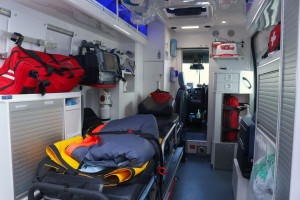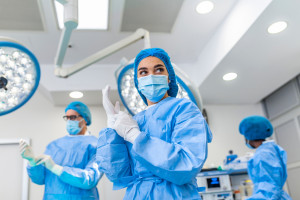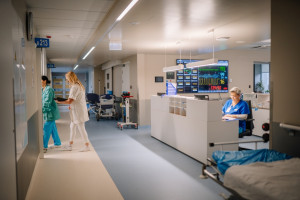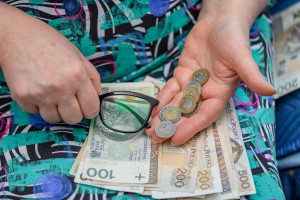It's worth checking your moles in the summer. A dermatologist explains how dermatoscopy works and why it's important.

- Dermatoscopy allows for a magnified assessment of whether the mole requires further diagnosis or removal.
- The test is recommended every 3-6 months for people at risk, and once a year for others.
- In summer, avoid the sun between 11 a.m. and 4 p.m. and use creams with SPF 50+, even on cloudy days.
In the summer, we tend to expose our skin to the sun more readily, spending our free time outdoors. However, it's worth remembering that exposure to UV radiation can have serious health consequences, and one of the basic preventative measures for skin protection is regular mole examination , also known as dermatoscopy .
What does the examination involve and what does it look like? - says doctor Bogumiła Medyńska , dermatologist from the Scanmed Medical Center in Wrocław, American Heart of Poland.
Dermatoscopy is a non-invasive examination that allows for the assessment of moles and other skin lesions under magnification, using a dermatoscope.
This device, resembling a magnifying glass and equipped with a light, allows the dermatologist to see structures invisible to the naked eye. The dermatoscope's magnification, usually around 10x, allows for analysis of the lesion's color, shape, and symmetry, as well as assessment of its deeper layers.
Dermatoscopic examinations can be performed on both adults and children - regardless of age.
Why is it worth examining moles?"Dermatoscopy is one of the basic diagnostic methods in dermatology. It allows us to distinguish benign lesions from those that may require further diagnosis or surgical removal," emphasizes dermatologist Bogumiła Medyńska from the Scanmed Medical Center in Wrocław, American Heart of Poland.
Regular mole checks should be mandatory, especially for people who:
- fair-skinned,
- with numerous birthmarks,
- history of sunburn
- with a family history of skin cancer.
How is a dermatoscopic examination performed?- Any lesion that suddenly changes color, shape, starts to itch, bleed or enlarge should be consulted with a dermatologist - adds the expert from the Scanmed Medical Center, American Heart of Poland.
The examination itself is quick and painless. The doctor places the dermatoscope on the skin, first coating the lens with a special oil that eliminates light reflections and allows for a more precise image of the lesion. The result is assessed based on the Total Dermatoscopic Score (TDS). Based on this, the doctor determines the degree of concern regarding the lesion and decides whether further diagnostics or observation is necessary.
For individuals at high risk—those with numerous moles, a positive family history, or a history of skin diseases—recommended follow-up dermatoscopic examinations every 3-6 months. For other patients, annual check-ups are recommended, or whenever a concerning lesion appears.
Be especially careful in the sun in summerDuring the summer, our skin is exposed to the harmful effects of UV radiation. Sun exposure not only accelerates the skin aging process but also significantly increases the risk of skin cancer.
"On sunny days, I recommend avoiding going outside during peak sunlight hours, which is between 11:00 a.m. and 4:00 p.m. It's essential to use sunscreen with a high SPF of 50+, which protects against UVA and UVB radiation. It's a good idea to apply sunscreen every 2-3 hours and after every swim, even on cloudy days," advises dermatologist Bogumiła Medyńska.
In the summer, when skin is exposed to the sun, it's worth being even more vigilant and not ignoring disturbing symptoms. Healthy skin is not just a matter of aesthetics, but above all, safety.
Copyrighted material - reprint rules are specified in the regulations .
rynekzdrowia











